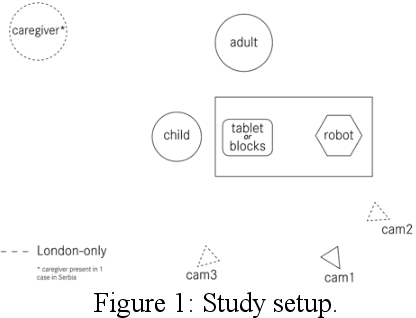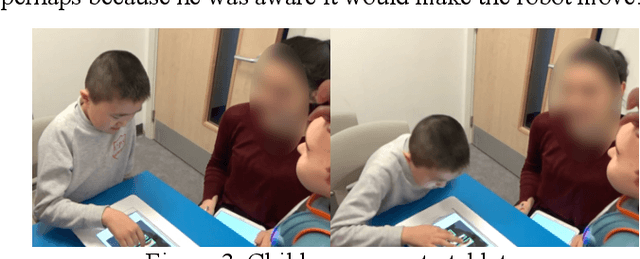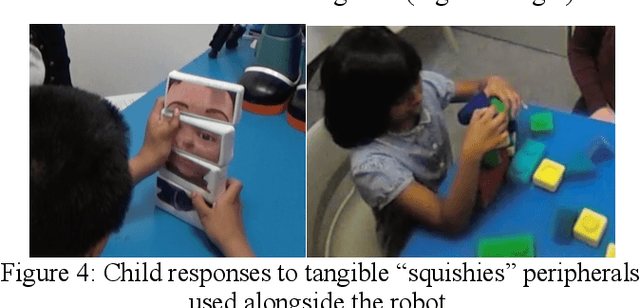Jamy Li
Usability of a Robot's Realistic Facial Expressions and Peripherals in Autistic Children's Therapy
Jul 23, 2020



Abstract:Robot-assisted therapy is an emerging form of therapy for autistic children, although designing effective robot behaviors is a challenge for effective implementation of such therapy. A series of usability tests assessed trends in the effectiveness of modelling a robot's facial expressions on realistic facial expressions and of adding peripherals enabling child-led control of emotion learning activities with autistic children. Nineteen autistic children interacted with a small humanoid robot and an adult therapist in several emotion-learning activities that featured realistic facial expressions modelled on either a pre-existing database or live facial mirroring, and that used peripherals (tablets or tangible 'squishies') to enable child-led activities. Both types of realistic facial expressions by the robot were less effective than exaggerated expressions, with the mirroring being unintuitive for children. The tablet was usable but required more feedback and lower latency, while the tactile tangibles were engaging aids.
Formalizing and Guaranteeing* Human-Robot Interaction
Jun 30, 2020
Abstract:Robot capabilities are maturing across domains, from self-driving cars, to bipeds and drones. As a result, robots will soon no longer be confined to safety-controlled industrial settings; instead, they will directly interact with the general public. The growing field of Human-Robot Interaction (HRI) studies various aspects of this scenario - from social norms to joint action to human-robot teams and more. Researchers in HRI have made great strides in developing models, methods, and algorithms for robots acting with and around humans, but these "computational HRI" models and algorithms generally do not come with formal guarantees and constraints on their operation. To enable human-interactive robots to move from the lab to real-world deployments, we must address this gap. This article provides an overview of verification, validation and synthesis techniques used to create demonstrably trustworthy systems, describes several HRI domains that could benefit from such techniques, and provides a roadmap for the challenges and the research needed to create formalized and guaranteed human-robot interaction.
 Add to Chrome
Add to Chrome Add to Firefox
Add to Firefox Add to Edge
Add to Edge